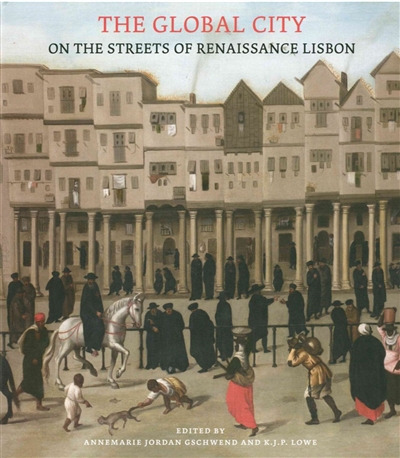en savoir plus

Permet à tous ses détenteurs d'obtenir 5% de réduction sur tous les livres lors du retrait en magasin (réduction non cumulable avec les réductions de type étudiant).
Offre également un certain nombre d'avantages auprès de nos partenaires.
Avec les favoris, retrouvez dans un espace les sélections effectuées au fur et à mesure de vos navigations dans le site.
Constituez pour votre usage personnel vos listes de livres en prévisions d'achats futurs et votre sélection d'articles, dossiers, événements, vidéos ou podcasts préférés ou à découvrir plus tard...
Il suffit simplement de cliquer sur "Ajout Favori" sur chaque page qui vous intéresse pour les retrouver ensuite dans votre espace personnel.
Requiert un compte Mollat
Requiert un compte Mollat
The global city : on the streets of Renaissance Lisbon
en savoir plus
Résumé
Deux peintures flamandes anonymes représentant la Rua Nova dos Mercadores, à Lisbonne, entre la fin du XVIe et le début du XVIIe siècle, servent de point de départ à la description de la capitale portugaise à la Renaissance. La vie commerçante et les produits du monde entier qui y étaient échangés (porcelaine chinoise, ivoires de Ceylan, animaux exotiques, etc.) sont présentés. ©Electre 2025
Quatrième de couverture
Recently identified by the editors as the Rua Nova dos Mercadores, the principal commercial and financial Street in Renaissance Lisbon, two sixteenth-century paintings, acquired by Dante Gabriel Rossetti in 1866, form the starting point for this portrait of a global city in the early modern period. Focusing on unpublished objects, and incorporating newly discovered documents and inventories that allow novel interprétations of the Rua Nova and the goods for sale on it, these essays offer a compelling and original study of a metropolis whose reach once spanned four continents.
The Rua Nova views, painted by an anonymous Flemish artist, portray an everyday scene on a recognisable street, with a diverse global population. This thoroughfare was the meeting point of all kinds of people, from rich to poor, slave to knight, indigenous Portuguese to Jews and diasporic black Africans.
The volume highlights the unique status of Lisbon as an entrepôt for curiosities, luxury goods and wild animais. As the Portuguese trading empire of the fifteenth and sixteenth century expanded sea-routes and networks from West Africa to India and the Far East, non-European cargoes were brought back to Renaissance Lisbon. Many rarities were earmarked for the Portuguese court, but simultaneously exclusive items were readily available for sale on the Rua Nova, the Lisbon équivalent of Bond Street or Fifth Avenue. Specialized shops offered West African and Ceylonese ivories, raffia and Asian textiles, rock crystals, Ming porcelain, Chinese and Ryukyuan lacquerware, jewellery, precious stones, naturalia and exotic animal byproducts. Lisbon was also a hub of distribution for overseas goods to other courts and cities in Europe. The cross-cultural and artistic influences between Lisbon and Portuguese Africa and Asia at this date will be re-assessed here.
Fiche Technique
Paru le : 18/01/2016
Thématique : Espagne
Auteur(s) : Non précisé.
Éditeur(s) :
Paul Holberton publishing
Collection(s) : Non précisé.
Contributeur(s) : Editeur scientifique (ou intellectuel) : Annemarie Jordan Gschwend - Editeur scientifique (ou intellectuel) : Kate J. P. Lowe
Série(s) : Non précisé.
ISBN : 978-1-907372-88-9
EAN13 : 9781907372889
Reliure : Relié sous jaquette
Pages : 295
Hauteur: 29.0 cm / Largeur 26.0 cm
Épaisseur: 2.7 cm
Poids: 1710 g

